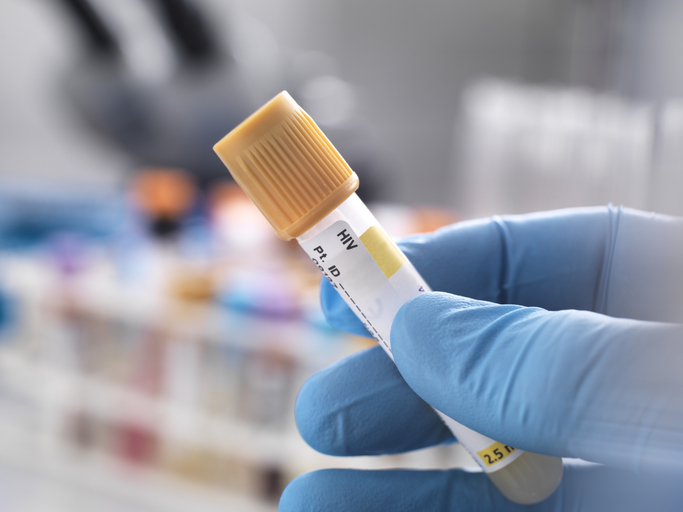Jefferson County hosts free Household Hazardous Waste Drop-Off Oct. 18 – thehomewoodstar.com

Report on Jefferson County’s Household Hazardous Waste Management Initiative and its Alignment with Sustainable Development Goals
Initiative Overview: Household Hazardous Waste Collection Day
Jefferson County is implementing a public Household Hazardous Waste (HHW) Drop-Off Day to mitigate serious safety and environmental problems associated with improper waste disposal. This initiative directly supports several United Nations Sustainable Development Goals (SDGs) by providing a framework for responsible waste management. The event is scheduled for October 18, from 8:00 a.m. to 11:30 a.m., and is free for all county residents.
Event locations are as follows:
- Camp Bessemer: 3295 King St.
- Camp Ketona: 121 County Shop Road
Contribution to SDG 12: Responsible Consumption and Production
This program is a critical component of achieving SDG 12, which calls for the environmentally sound management of chemicals and all wastes throughout their life cycle. By providing a designated collection event, the county encourages residents to adopt responsible consumption patterns, culminating in the safe disposal of products. Hana Berres, Stormwater Education Training Manager, emphasized that HHW should never be disposed of via sinks, drains, toilets, ground, storm drains, or regular trash. This initiative prevents harmful substances from entering residential landfills, which are not equipped to manage hazardous materials, thereby reducing pollution and advancing sustainable waste management practices.
Contribution to SDG 6: Clean Water and Sanitation & SDG 14: Life Below Water
The collection event is a direct action to protect water resources, a core target of SDG 6 (Clean Water and Sanitation). Improper disposal of HHW, such as pouring chemicals into storm drains, leads to the contamination of local water bodies. This pollution threatens both the safety of community water supplies and the health of aquatic ecosystems, which is the focus of SDG 14 (Life Below Water). By intercepting these hazardous materials, the county actively prevents water pollution at its source.
Contribution to SDG 11: Sustainable Cities and Communities & SDG 15: Life on Land
Effective HHW management is essential for creating sustainable and resilient communities, as outlined in SDG 11. The initiative reduces the negative environmental impact of the county by preventing hazardous chemicals from leaching into the soil from landfills, a direct contribution to SDG 15 (Life on Land). Furthermore, it addresses the long-term challenge of landfill capacity. As stated by Berres, “The faster we fill up landfills, the faster we have to build more.” Diverting HHW extends the lifespan of existing landfills and reduces the financial and social costs associated with developing new ones.
Contribution to SDG 3: Good Health and Well-being
The program safeguards public health, aligning with SDG 3. Improperly disposed HHW poses a significant risk to waste workers who can be exposed to dangerous chemical reactions, such as the mixing of bleach and ammonia from different sources within trash compactors. Preventing these materials from entering the general waste stream protects workers and the community from exposure to hazardous vapors and contaminated environments.
Event Logistics and Accepted Materials
Participants must be residents of Jefferson County and are requested to sort items before arrival. The event will accept a wide range of materials, categorized as follows:
- Automotive Products: Vehicle fluids, degreasers, tires (no rim).
- Household Products: Chemicals, cleaners, batteries, light bulbs.
- Outdoor Products: Fertilizers, pesticides, pool and yard chemicals.
- Paint Products: Paints, thinners, wallpaper cement.
- Miscellaneous Items: Fire extinguishers, smoke alarms, mercury, household cooking oil, and grease.
- Special Recyclables: No. 1 and 2 plastic bottles, aluminum cans, glass bottles.
In addition to HHW, the event will also accept TVs, electronics, and paper for shredding.
Further Information
A complete list of accepted items and further details are available through the following channels:
- Telephone: 205-325-8741
- Website: jccal.org
- Application: MyJeffCo App
Analysis of Sustainable Development Goals in the Article
1. Which SDGs are addressed or connected to the issues highlighted in the article?
- SDG 3: Good Health and Well-being: The article addresses health risks associated with the improper disposal of hazardous waste, such as the creation of dangerous vapors that can harm waste workers.
- SDG 6: Clean Water and Sanitation: It explicitly warns against pouring hazardous waste into sinks, drains, or storm drains, which directly impacts water quality and sanitation systems.
- SDG 11: Sustainable Cities and Communities: The article focuses on a community-level (Jefferson County) initiative for municipal waste management, addressing the problems of landfills and the environmental impact of waste in a populated area.
- SDG 12: Responsible Consumption and Production: The core theme is the promotion of environmentally sound management of chemical and household waste, as well as encouraging recycling to reduce the overall waste stream.
2. What specific targets under those SDGs can be identified based on the article’s content?
- Target 3.9: “By 2030, substantially reduce the number of deaths and illnesses from hazardous chemicals and air, water and soil pollution and contamination.” The article supports this target by highlighting the dangers HHW poses to waste workers (e.g., “mixing bleach and ammonia”) and the environment (“leach harmful chemicals”). The drop-off event is a direct measure to mitigate these risks.
- Target 6.3: “By 2030, improve water quality by reducing pollution, eliminating dumping and minimizing release of hazardous chemicals and materials…” The article’s instruction that HHW “should never be poured into sinks or drains, flushed down toilets, [or] discarded in storm drains” directly aligns with this target by aiming to prevent chemical pollution of water sources.
- Target 11.6: “By 2030, reduce the adverse per capita environmental impact of cities, including by paying special attention to air quality and municipal and other waste management.” The Jefferson County event is a clear example of a municipality improving its waste management system. It addresses the issue of residential landfills not being “designed to handle hazardous materials” and aims to reduce the overall environmental footprint of the community’s waste.
- Target 12.4: “By 2020, achieve the environmentally sound management of chemicals and all wastes throughout their life cycle…and significantly reduce their release to air, water and soil…” The entire purpose of the Household Hazardous Waste Drop-Off Day is to provide a mechanism for the environmentally sound management of chemicals and wastes like paint, automotive products, and cleaners, preventing their release into the environment.
- Target 12.5: “By 2030, substantially reduce waste generation through prevention, reduction, recycling and reuse.” The event contributes to this target by explicitly accepting “special recyclables” such as plastic bottles, aluminum cans, and glass bottles, thereby promoting recycling as a method of waste reduction.
3. Are there any indicators mentioned or implied in the article that can be used to measure progress towards the identified targets?
The article does not provide specific quantitative data, but it implies several indicators that could be used to measure the success of the initiative and progress towards the targets:
- Amount of hazardous waste collected: The total volume or weight of HHW (paints, chemicals, batteries, etc.) collected during the event is a direct indicator of the amount of hazardous material diverted from improper disposal routes like regular landfills, drains, and soil. This measures progress towards targets 3.9, 6.3, and 12.4.
- Number of participants: The article states that participants must be residents of Jefferson County. Tracking the number of households that participate in the drop-off day can serve as an indicator of community engagement and awareness regarding proper waste disposal, relevant to Target 11.6.
- Amount of recyclable materials collected: The volume of “No. 1 and 2 plastic bottles, aluminum cans, and glass bottles” collected is a specific indicator for measuring progress towards Target 12.5, as it quantifies the recycling efforts of the community.
- Amount of electronic waste collected: The article mentions that the event accepts “TVs” and “electronics.” The quantity of e-waste collected is an indicator of responsible management of another category of hazardous waste, contributing to targets 11.6 and 12.4.
4. Table of SDGs, Targets, and Indicators
| SDGs | Targets | Indicators (Implied from the article) |
|---|---|---|
| SDG 3: Good Health and Well-being | 3.9: Reduce illnesses from hazardous chemicals and pollution. | Volume of hazardous chemicals (e.g., bleach, ammonia, cleaners) safely disposed of, preventing exposure to waste workers and the public. |
| SDG 6: Clean Water and Sanitation | 6.3: Improve water quality by reducing pollution and dumping of hazardous materials. | Amount of liquid hazardous waste (vehicle fluids, paints, thinners) diverted from sinks, toilets, and storm drains. |
| SDG 11: Sustainable Cities and Communities | 11.6: Reduce the adverse environmental impact of cities through improved waste management. | Total amount of HHW and e-waste diverted from residential landfills to specialized facilities; Number of county residents participating in the program. |
| SDG 12: Responsible Consumption and Production | 12.4: Achieve environmentally sound management of chemicals and all wastes. | Total quantity of all accepted hazardous items (automotive, household, paint, etc.) collected for sound management. |
| 12.5: Substantially reduce waste generation through recycling. | Volume of special recyclables (plastic bottles, aluminum cans, glass bottles) collected at the event. |
Source: thehomewoodstar.com

What is Your Reaction?
 Like
0
Like
0
 Dislike
0
Dislike
0
 Love
0
Love
0
 Funny
0
Funny
0
 Angry
0
Angry
0
 Sad
0
Sad
0
 Wow
0
Wow
0








































































